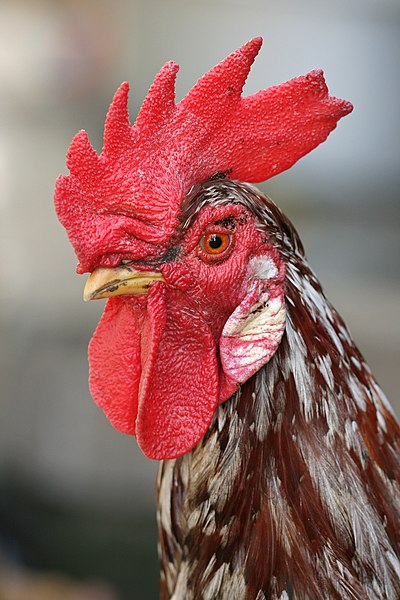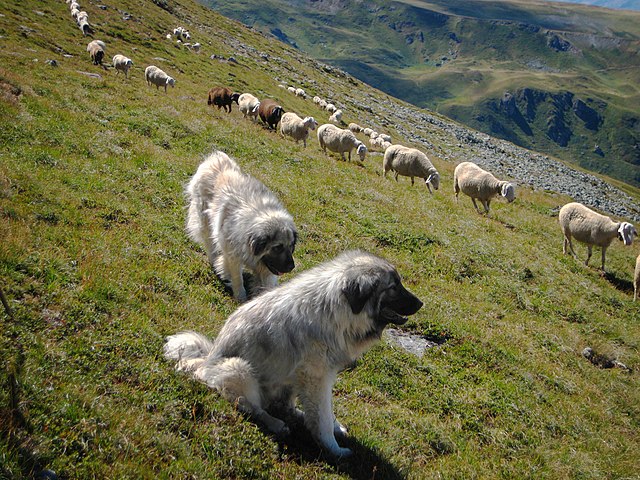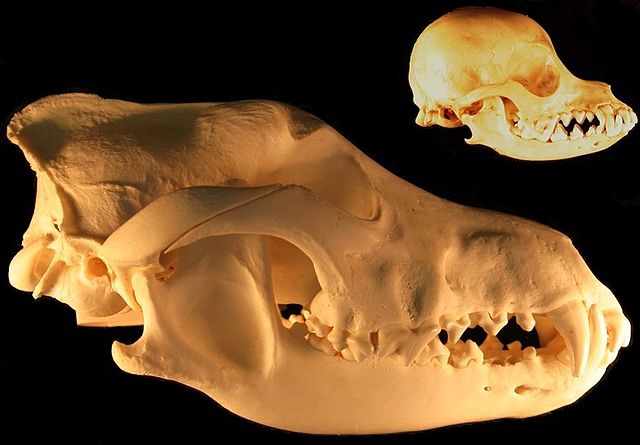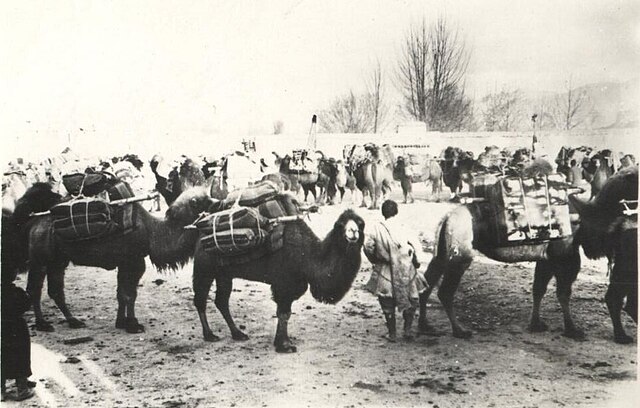Poultry are domesticated birds kept by humans for the purpose of harvesting animal products such as meat, eggs or feathers. The practice of raising poultry is known as poultry farming. These birds are most typically members of the superorder Galloanserae (fowl), especially the order Galliformes. The term also includes waterfowls of the family Anatidae but does not include wild birds hunted for food known as game or quarry.
Poultry of the world (c. 1868)
Cock with comb and wattles
Roman mosaic depicting a cockfight
Pekin ducks
Domestication is a multi-generational mutualistic relationship in which an animal species, such as humans or leafcutter ants, takes over control and care of another species, such as sheep or fungi, so as to obtain from them a steady supply of resources, such as meat, milk, or labor. The process is gradual and geographically diffuse, based on trial and error.
Dogs and sheep were among the first animals to be domesticated, at least 15,000 and 11,000 years ago respectively.
Rice was domesticated in China, some 13,500 to 8,200 years ago.
Domesticated animals tend to be smaller and less aggressive than their wild counterparts; many have other domestication syndrome traits like shorter muzzles. Skulls of grey wolf (left), chihuahua dog (right)
While dogs were commensals, and sheep were kept for food, camels, like horses and donkeys, were domesticated as working animals.








